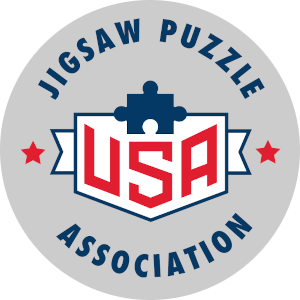Introduction
We are testing a new ranking system, meant to help compare relative puzzling speeds and difficulties of different jigsaw puzzles. The working name for the system is JPAR (JPA-Ranking).
How it works
Here’s a simplified explanation for how it works.
- With an initial set of puzzlers doing the same initial puzzles, get an average JPAR-time for each puzzle. This will represent their relative difficulties.
- For each puzzler, scale their puzzle completing times by the corresponding average JPAR-times. This should result in a normalized puzzling speed for each puzzle. Taking the average of that should result in an average JPAR-score or relative puzzler speed.
As an example, imagine puzzlers A, B, and C, assembling puzzles M, N, and O. Their times are in the table as follows:
| Puzzle M | Puzzle N | Puzzle O | |
| Puzzler A | 20 min | 55 min | 25 min |
| Puzzler B | 10 min | 25 min | 15 min |
| Puzzler C | 24 min | 70 min | 23 min |
So for Puzzle M, the average JPAR-time is (20+10+24) / 3 = 18
Similarly, Puzzle N has a JPAR-time of 50 and Puzzle O has 21.
| Puzzle | JPAR-time |
| M | 18 |
| N | 50 |
| O | 21 |
Next, scale Puzzler A’s times.
| Actual time | Puzzle JPAR-time | Scaled | |
| Puzzle M | 20 min | 18 | 20/18 = 1.11 |
| Puzzle N | 55 min | 50 | 55/50 = 1.10 |
| Puzzle O | 25 min | 21 | 25/21 = 1.19 |
The average of those scaled times would be
(1.11 + 1.10 + 1.19) / 3
= 3.40 / 3
= 1.13
Repeating the process for Puzzler B, we get
((10/18) + (25/50) + (15/21)) / 3
= (0.56 + 0.50 + 0.71) / 3
= 1.77 / 3
= 0.59
For Puzzler C,
((24/18) + (70/50) + (23/21)) / 3
= (1.33 + 1.40 + 1.10) / 3
= 3.83 / 3
= 1.28
| Puzzler | JPAR-score |
| A | 1.13 |
| B | 0.59 |
| C | 1.28 |
Note that even though Puzzler C beat Puzzler A on Puzzle O, on average, they still take more time, and that is reflected in the larger JPAR-score.
New puzzler
Now suppose Puzzler D comes along. In order to obtain a JPAR-score, they will need to assemble puzzles with a JPAR-time.
Puzzler D does only Puzzle M in 17 minutes, which has a JPAR-time of 18. Their JPAR-score will be 17/18 = 0.94
Note that Puzzler D’s time will not affect Puzzle M’s JPAR-time. This is so that the puzzle’s relative ranking will not change when a single faster or slower puzzler does it.
New puzzles
To assign a new puzzle a JPAR-time, it needs to be assembled by puzzlers with JPAR-scores.
The time that each puzzler takes is divided by their JPAR-score to get an expected average time for the puzzle.
| Puzzler A | Puzzler C | Puzzler D | |
| Puzzle P | 21 min | 23 min | 17 min |
| JPAR-score | 1.13 | 1.28 | 0.94 |
| Time/JPAR-score | 18.58 | 17.97 | 18.09 |
Averaging the result of the last row is
(18.58 + 17.97 + 18.09) / 3
= 54.64 / 3
= 18.21
Updating JPAR-scores
A puzzler can improve their JPAR-scores as it is recomputed when more puzzle times get added into the mix.
Updating JPAR-times
On a regular basis, JPAR-times for puzzles can be recomputed to provide a more accurate relative difficulty rating. The puzzles used for the initial set will provide the starting reference point for the scale, and there must be times for all the puzzlers used for that initial set.
What data will be used for JPAR?
We will use times from our official competitions to generate JPAR-scores for members. As we develop standardized competition guidelines that can be used by other organizations, we may be able to include results from those events in our ranking data in future.
Frequently Asked Questions
How do I get a JPAR score?
Participate in one of our competitions as a member, and your JPAR score will be computed and published after the event!
To ask a different question or to send a comment, contact us.
